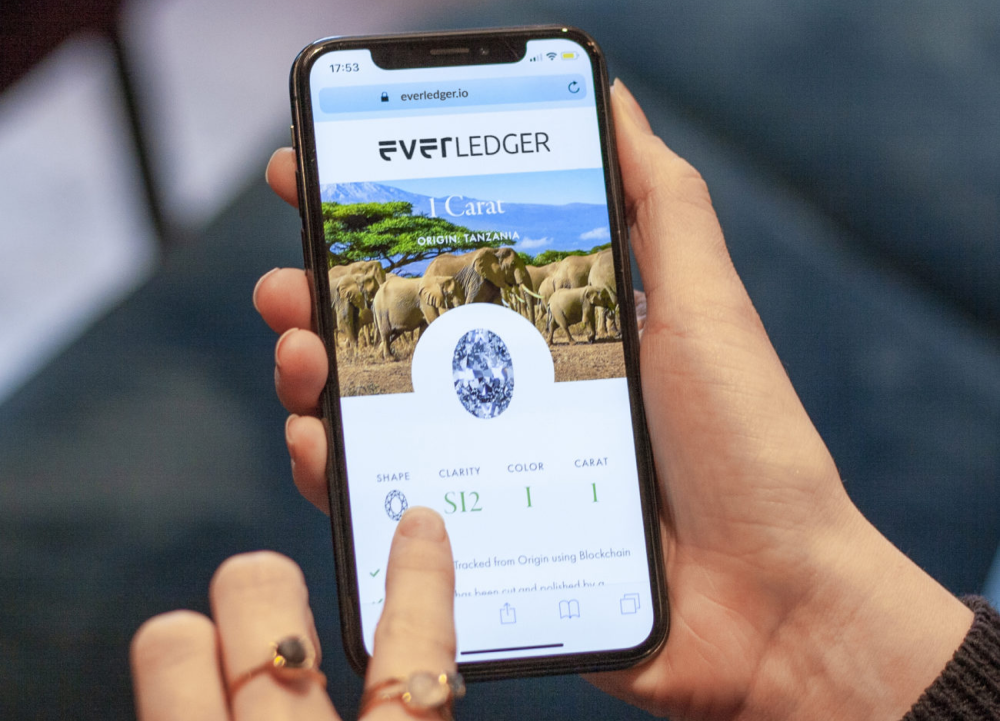
The diamond industry has consistently been shrouded in secrecy, with a complex supply chain that has often made it difficult for consumers to know where their diamonds come from and whether they were ethically sourced. All of that is changing, thanks to the increasing importance of traceability in the industry and the innovative technology solutions being developed to promote transparency and accountability.
In today’s world, consumers are becoming more aware of the impact their purchasing decisions have on the environment and society. They are looking for assurance that the products they buy are not only beautiful, but also ethically and sustainably sourced. The diamond industry has taken note of these concerns and is now embracing traceability as a way to improve its reputation and meet the growing demand for responsible sourcing. However, despite the progress that has been made in traceability, there are still challenges that need to be overcome. The diamond industry is complex and global, with many players involved in the supply chain.
Ensuring that every diamond is traced from the mine to the retailer is a massive undertaking that requires collaboration and investment from all participants in the industry. But the benefits of traceability are clear and far-reaching. Traceability can help to ensure that diamonds are ethically sourced, free from human rights violations and environmental harm. It can also help to improve the security and integrity of the diamond supply chain, reducing the risk of conflict diamonds entering the market.
For consumers, traceability offers peace of mind and a way to make informed purchasing decisions. The diamond industry has recognised the importance of traceability and is now taking concrete steps to improve it Leading players in the industry are investing in technology solutions that can track the journey of diamonds from the mine to the retailer, providing a clear and transparent chain of custody.
For example, the Everledger Blockchain Diamond platform uses blockchain technology to create a secure and transparent record of a diamond’s journey, from the mine to the retailer. The platform provides a tamper-proof digital trail that can be easily accessed by consumers, giving them the assurance they need that their diamond has been ethically sourced.
Another example is the Gemological Institute of America (GIA) that has launched a new traceability program, called the ‘GIA Diamond Origin Report,’ which uses advanced scientific techniques to determine a diamond’s origin and provide a detailed provenance report. The program is designed to give consumers confidence in the authenticity and origin of their diamonds, as well as peace of mind that the diamond has been ethically and sustainably sourced.
The implementation of traceability in the diamond industry presents several challenges that must be overcome. One of the biggest challenges is aligning physical and digital systems to ensure that all relevant information is captured and stored in a secure and accessible manner. This requires the use of sophisticated technologies and the collaboration of various stakeholders in the industry, including miners, processors, manufacturers, and retailers.
Another challenge is maintaining the chain of custody of diamonds from the time they are mined to the time they reach the consumer. This involves ensuring that all diamonds are handled, transported, and stored in a manner that protects their authenticity, quality, and origin. This requires a combination of physical and digital systems to track the movement of diamonds and to ensure that the chain of custody remains unbroken.
Additionally, it is important to ensure that all stakeholders in the industry, including suppliers and suppliers’ suppliers, adhere to strict “know your customer” (KYC) and “know your supplier” (KYS) requirements. KYC involves verifying the identity of customers to ensure that they are legitimate and not involved in any illegal activities. KYS involves verifying the legitimacy of suppliers and their suppliers to ensure that they are operating in an ethical and sustainable manner. These measures help to build trust and confidence in the industry and protect consumers from purchasing diamonds that are associated with illegal or unethical practices.
The concept of “know your object” (KYO) has gained significant attention in recent years, particularly in the diamond industry. KYO is essentially a digital twin of a diamond, which combines both the physical and digital attributes of the diamond into a single, unified representation. The rise of KYO is a response to the increasing demand for transparency and accountability in the diamond industry. With a digital twin, consumers can access a wealth of information about a diamond, including its origin, authenticity, and ethical sourcing. This level of detail is not only beneficial to consumers but also to the industry, as it allows for greater efficiency in supply chain management. The integration of physical and digital attributes of a diamond through KYO is a major step forward in the quest for a more transparent and trustworthy diamond industry.
Traceability is transforming the diamond industry, promoting transparency, accountability and responsible sourcing. The innovative solutions being developed by leading players in the industry are helping to ensure that diamonds are ethically and sustainably sourced, giving consumers the peace of mind they need when making a purchase. The diamond industry has a bright future, and traceability is a key part of that future. As the industry continues to evolve, it is clear that traceability will play an increasingly important role in shaping the future of the diamond industry.

Leanne Kemp
CEO, Everledger
everledger.io
Further reading: